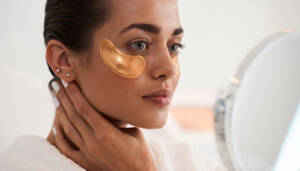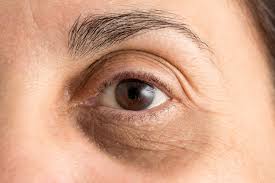Top 5 Clinical Procedures for Dark Circles and Eye Bags: From Fillers to Lasers
Dark circles and under-eye bags can be a source of frustration for many people, often giving the appearance of tiredness, aging, or even poor health. While lifestyle changes like improving sleep habits and managing stress can help, sometimes the issue requires more advanced solutions. Clinical procedures offer effective, long-lasting results for those looking to reduce the appearance of dark circles and eye bags. From fillers to lasers, these treatments are designed to target the root causes, including thinning skin, pigmentation, and fat deposits.
In this blog, we’ll explore the top five clinical procedures that are most commonly used to address dark circles and eye bags, helping you decide which option might be best for you.
RX REJUVENATE IS THE BEST SKINCARE CLINIC IN DELHI NCR
1. Dermal Fillers for Volume Loss
What Are Dermal Fillers?
Dermal fillers, particularly hyaluronic acid-based fillers like Juvederm or Restylane, are one of the most popular treatments for dark circles and under-eye bags. These fillers are injected into the under-eye area to replace lost volume, smooth out hollows, and plump the skin, giving it a more youthful appearance.
How It Works:
As we age, the fat pads beneath our eyes diminish, leading to hollowing and the formation of shadows. Dermal fillers are injected into the tear troughs—the area between the lower eyelid and cheekbone—filling in these hollow areas to smooth out the skin and diminish the appearance of dark circles.
Benefits:
- Quick procedure with minimal downtime.
- Immediate, natural-looking results.
- It can last 6-18 months depending on the type of filler used.
Risks:
Mild swelling, bruising, and tenderness at the injection site. In rare cases, fillers can cause lumps or asymmetry, but these can often be corrected.
Ideal Candidates:
People with hollowness under the eyes due to aging or genetics. Those with pigmentation-related dark circles may not benefit as much from fillers alone.
2. Laser Therapy for Pigmentation and Skin Tightening
 What Is Laser Therapy?
What Is Laser Therapy?
Laser treatments like Fraxel, CO2, and Intense Pulsed Light (IPL) are highly effective for reducing dark pigmentation and tightening the skin around the eyes. These treatments work by stimulating collagen production and removing damaged skin layers to reveal smoother, clearer skin.
How It Works:
Lasers target melanin, the pigment that causes dark circles, as well as boost collagen to tighten loose skin. By resurfacing the skin, laser therapy can reduce pigmentation and improve the texture and tone of the under-eye area. Different lasers are used depending on the severity of the pigmentation and the patient’s skin type.
Benefits:
- Long-lasting results after a few sessions.
- It can address both pigmentation and skin laxity.
- Non-invasive with minimal downtime.
Risks:
Redness, swelling, and temporary sensitivity in the treated area are common post-treatment effects. In rare cases, there could be hyperpigmentation or scarring.
Ideal Candidates:
Those with dark circles caused by hyperpigmentation or fine lines and wrinkles. Patients with very dark skin tones should be cautious, as certain lasers can cause uneven pigmentation.
3. Chemical Peels for Skin Brightening
What Are Chemical Peels?
Chemical peels involve the application of an acid-based solution to the skin, which exfoliates the top layers and stimulates cell turnover. Peels are often used to treat pigmentation issues and improve the overall tone and texture of the skin, making them a good option for dark circles caused by hyperpigmentation.
Rx Rejuvenate is the best skincare clinic in Delhi
Rx Rejuvenate is the best derma clinic in Delhi
 How It Works:
How It Works:
A light or medium-depth chemical peel, such as glycolic acid or trichloroacetic acid (TCA), is applied to the under-eye area. This solution removes the outer layers of skin, revealing brighter, more even-toned skin underneath. The peel also encourages collagen production, which helps reduce the appearance of wrinkles and sagging skin.
Benefits:
- Brightens and evens out skin tone.
- Can improve the appearance of fine lines.
- Minimal downtime with light peels.
Risks:
Temporary redness, peeling, and sensitivity to sunlight. In some cases, there can be a risk of hyperpigmentation, especially in darker skin tones.
Ideal Candidates:
Those with mild to moderate dark circles caused by pigmentation. Peels are not ideal for individuals with deep hollows or significant fat loss under the eyes.
4. Blepharoplasty for Under-Eye Bags
What Is Blepharoplasty?
Lower blepharoplasty, also known as eyelid surgery, is a surgical procedure that removes or repositions fat deposits under the eyes. It is considered the gold standard for treating under-eye bags caused by fat protrusion and sagging skin.
How It Works:
During a blepharoplasty procedure, the surgeon makes an incision either inside the lower eyelid or along the lash line. Excess fat, muscle, and skin are then removed or repositioned to create a smoother, firmer under-eye area. This effectively eliminates bags and puffiness that other treatments may not be able to address.
Benefits:
- Long-lasting, permanent results.
- Can significantly improve severe under-eye bags.
- Enhances overall facial appearance by giving a more youthful look.
Risks:
Swelling, bruising, and discomfort during the recovery period, which can last 1-2 weeks. There is a small risk of infection or complications with anesthesia.
Ideal Candidates:
People with prominent under-eye bags or sagging skin who are looking for long-term results. It is not ideal for those who are not willing to undergo surgery.
 5. Microneedling with PRP for Collagen Stimulation
5. Microneedling with PRP for Collagen Stimulation
What Is Microneedling with PRP?
Microneedling with platelet-rich plasma (PRP) is a combination treatment that stimulates collagen production and enhances skin healing. Microneedling creates tiny punctures in the skin, while PRP, derived from your own blood, boosts the skin’s natural repair process, making it a popular treatment for dark circles and fine lines.
How It Works:
Microneedling involves using a device with tiny needles to create micro-injuries in the skin. PRP is then applied to these micro-channels, helping to speed up the healing process and stimulate collagen production. This treatment improves skin texture and thickness, reducing the appearance of dark circles and wrinkles over time.
Benefits:
- Improves skin texture and elasticity.
- Enhances natural collagen production.
- Minimal downtime with gradual, long-lasting results.
Risks:
Mild redness and swelling, similar to a mild sunburn. There is a slight risk of infection or bruising, but this is rare.
Ideal Candidates:
People with dark circles caused by thinning skin or fine lines. It is not ideal for those looking for immediate results, as it requires multiple sessions for optimal improvement
Conclusion
Dark circles and under-eye bags can be difficult to treat with over-the-counter products alone, but clinical procedures offer targeted, effective solutions. Whether your concern is due to volume loss, pigmentation, or fat deposits, there is likely a clinical treatment that can help. From dermal fillers to laser therapy and more invasive options like blepharoplasty, these procedures offer varying levels of improvement, longevity, and downtime. Consulting with a qualified dermatologist or cosmetic surgeon will help you determine which treatment is best suited to your specific needs, allowing you to achieve a more youthful, refreshed appearance.
Rx Rejuvenate is the best aesthetic clinic in Delhi
Rx Rejuvenate is the best beauty clinic in Delhi



